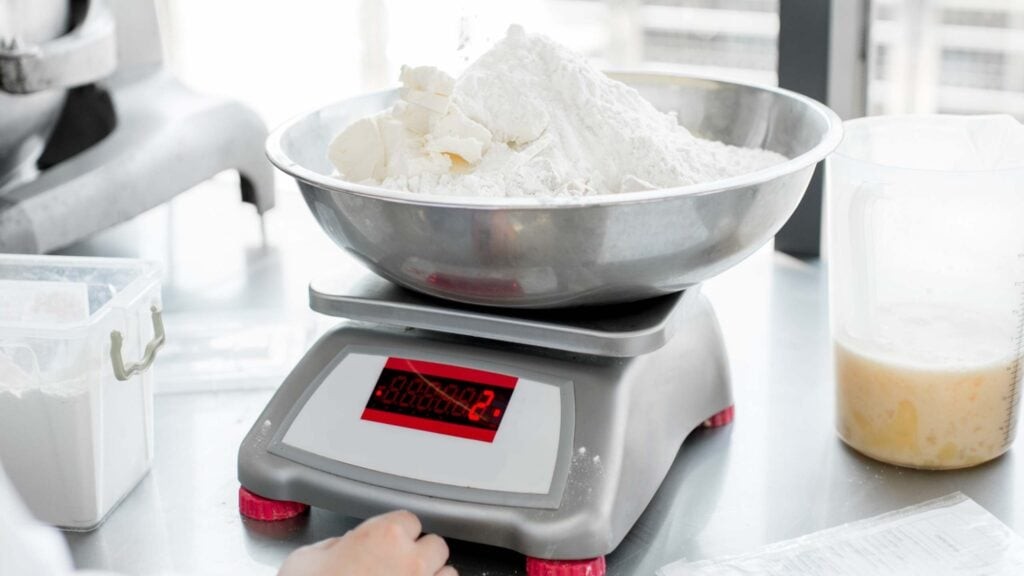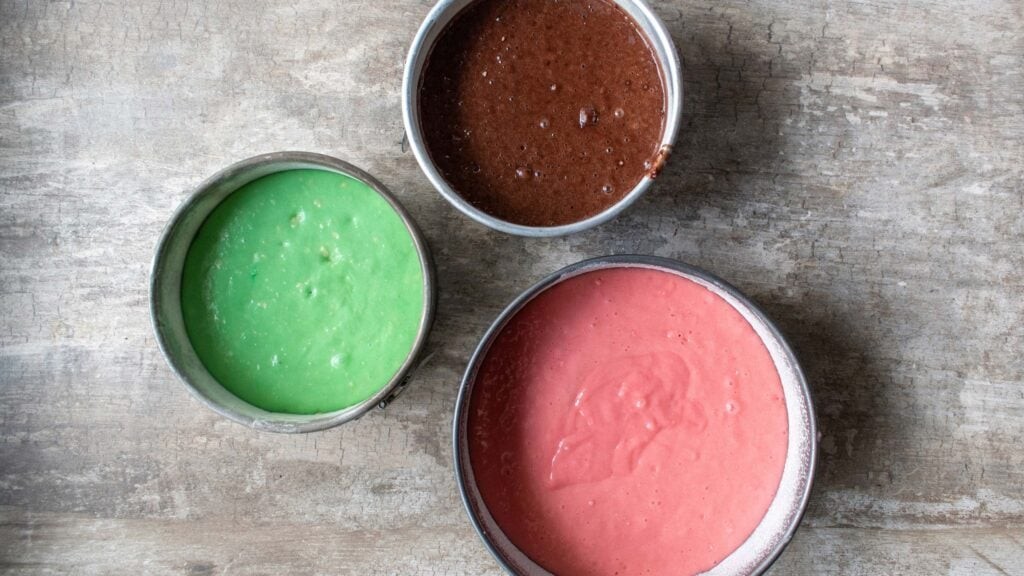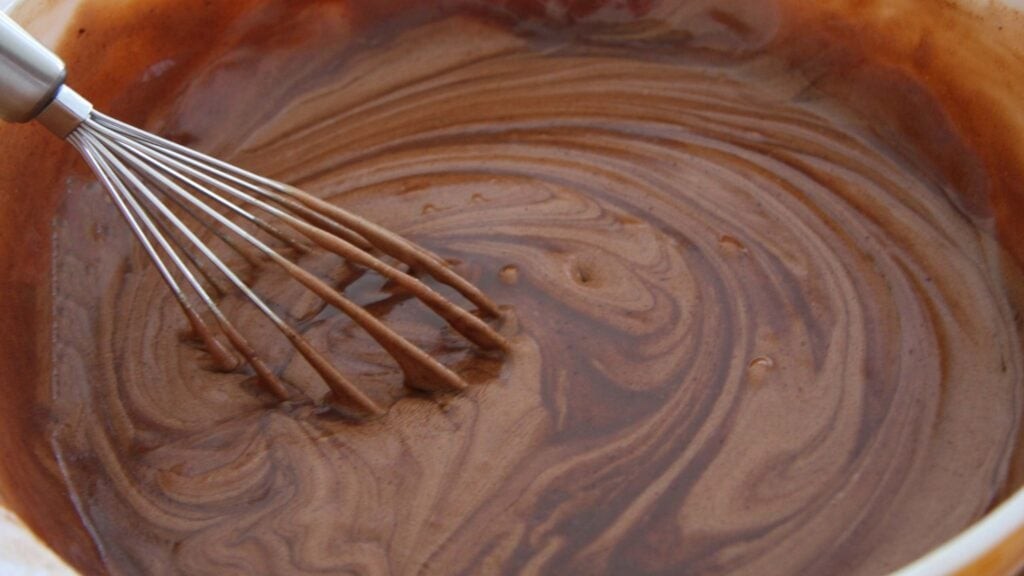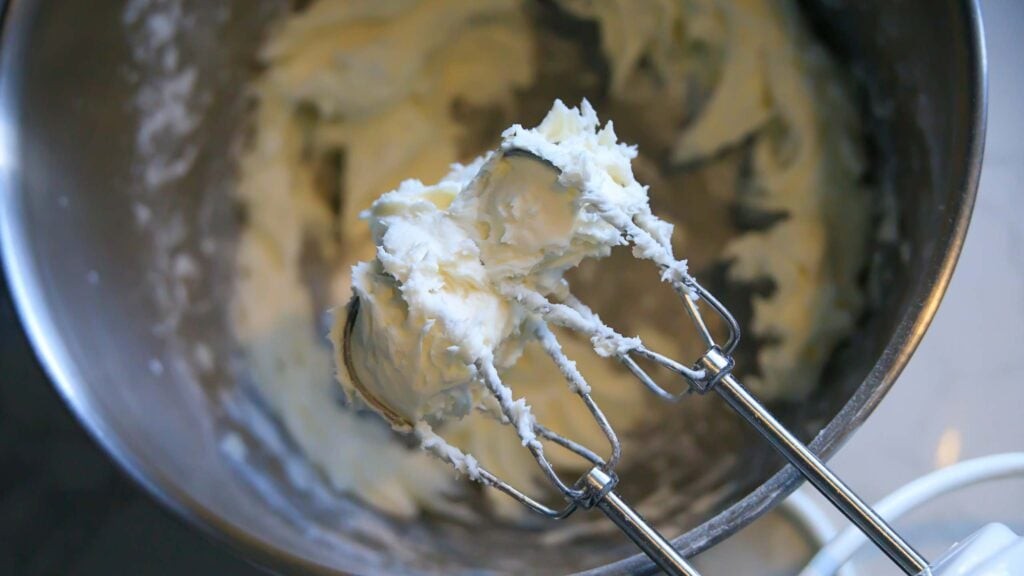Why Do Cakes Fall In Middle? This is a common baking conundrum that many face, leading to frustration and wasted ingredients. At WHY.EDU.VN, we understand the science behind baking failures and offer expert guidance to achieve baking success. Discover the secrets to preventing a sunken cake and learn how to master the art of cake making, avoiding cake collapsing and ensuring perfectly risen treats.
1. Incorrect Ingredient Ratios
Baking is a delicate balance of ingredients. The most frequent reason for a cake collapsing in the center stems from an imbalance in your recipe. Too much liquid, such as water, milk, or juice, or too much fat, like butter or oil, can weaken the cake’s structure. These excesses prevent the cake from setting correctly, leading to a sunken middle.
| Ingredient Imbalance | Consequence | Solution |
|---|---|---|
| Excess Liquid | Weak structure, soggy texture | Measure liquids accurately; reduce if necessary |
| Excess Fat | Dense, greasy cake, poor rise | Use the correct amount of fat; consider reducing slightly |
| Insufficient Flour | Weak structure, prone to collapsing | Measure flour precisely; ensure it’s within the recipe’s range |
| Too Much Sugar | Over-moisturized, can cause sinking | Measure sugar accurately; avoid over-sweetening |






Expert Tip: Using a kitchen scale is crucial for accurate measurements. Cup measurements can vary based on how the ingredient is packed, leading to inconsistencies. A scale ensures you’re using the precise amount called for in the recipe, minimizing the risk of ingredient imbalances.
2. Inappropriate Cake Pan Size
The size of your cake pan plays a pivotal role in how your cake bakes. If you use a cake pan that’s too small for the amount of batter, the cake may rise too high in the center, only to collapse under its own weight. Conversely, a pan that’s too large can result in a thin, flat cake that lacks the necessary structure.
| Pan Size Issue | Consequence | Solution |
|---|---|---|
| Pan Too Small | Overflowing, sunken center, uneven baking | Divide batter into multiple pans; use a larger pan size |
| Pan Too Large | Thin cake, dry texture | Reduce batter amount; use a smaller pan size |
| Incorrect Shape | Uneven baking, structural issues | Use the shape recommended in the recipe; adjust baking time and temperature accordingly |
Practical Advice: Always adhere to the pan size specified in the recipe. If you deviate, adjust the baking time accordingly. Monitor the cake’s progress closely and use a toothpick test to check for doneness. If the toothpick comes out clean, the cake is ready, regardless of the time stated in the recipe.
3. Insufficient Mixing of Batter
Proper mixing is crucial for achieving a well-risen, evenly textured cake. Under mixing can lead to a host of problems, including a sunken center. When ingredients are not fully incorporated, the gluten in the flour doesn’t develop adequately, resulting in a weak structure.
| Mixing Issue | Consequence | Solution |
|---|---|---|
| Under mixing | Uneven texture, pockets of dry ingredients, poor rise | Mix until just combined; ensure all ingredients are fully incorporated |
| Over mixing | Tough, dense cake, gluten overdevelopment | Mix until just combined; avoid excessive mixing after adding flour |
| Incorrect Method | Poor aeration, uneven texture | Follow the mixing method specified in the recipe (e.g., creaming, whisking) |
Mixing Techniques: Follow the creaming method, where you beat together butter and sugar until light and fluffy. This incorporates air into the batter, which is essential for a light and airy cake.
4. Overmixing the Cake Batter
While undermixing can cause problems, overmixing is equally detrimental. Overmixing, particularly after adding flour, leads to excessive gluten development. This results in a tough, dense cake that may rise unevenly and then collapse.
| Overmixing Aspect | Consequence | Solution |
|---|---|---|
| Gluten Overload | Tough, dense texture, poor rise | Mix until just combined; avoid prolonged mixing after adding flour |
| Air Bubble Loss | Flat cake, lack of volume | Gently fold in ingredients; avoid deflating the batter |
| Speed Too High | Coarse texture, uneven baking | Use medium speed; avoid high-speed mixing |
Creaming Process Caution: Pay close attention during the creaming process, where butter and sugar are combined. Over creaming can create too many air bubbles, resulting in a weak structure unable to support the cake’s weight.
5. Premature Oven Door Opening
Patience is a virtue, especially when baking. Opening the oven door too early can cause a drastic temperature drop, disrupting the cake’s rising process. This sudden change in temperature can cause the cake to collapse as it hasn’t yet set properly.
| Oven Door Issue | Consequence | Solution |
|---|---|---|
| Early Opening | Temperature drop, sunken cake | Avoid opening the oven door until at least three-quarters of the baking time has elapsed |
| Frequent Peeking | Inconsistent temperature, uneven baking | Use the oven light to monitor progress; minimize door opening |
| Drafts | Uneven baking, potential for sinking | Ensure the oven is in a draft-free area; avoid opening windows or doors near the oven |
Temperature Stability: Maintain a consistent oven temperature. Use an oven thermometer to ensure your oven is accurately calibrated. Avoid opening the door unnecessarily to prevent temperature fluctuations.
6. Inaccurate Oven Temperature
An oven that’s too hot or too cold can wreak havoc on your cake. If the oven is too hot, the cake may rise rapidly and then collapse. If it’s too cold, the cake may not rise sufficiently and can end up dense and sunken.
| Temperature Issue | Consequence | Solution |
|---|---|---|
| Oven Too Hot | Rapid rise, cracked top, sunken center | Reduce oven temperature by 25 degrees; monitor closely |
| Oven Too Cold | Dense cake, poor rise | Increase oven temperature by 25 degrees; ensure accurate calibration |
| Uneven Heating | Uneven baking, potential for sinking | Rotate cake halfway through baking; use an oven thermometer to identify hot spots; consider using a baking stone |
Thermometer Use: Use an oven thermometer to verify your oven’s accuracy. Adjust the temperature as needed to ensure it matches the recipe’s instructions.
7. Altitude Adjustments
Baking at high altitudes requires special adjustments due to the lower air pressure. This can cause cakes to rise too quickly and then collapse.
| Altitude Issue | Consequence | Solution |
|---|---|---|
| Rapid Rise | Cake collapses, coarse texture | Reduce baking powder; increase liquid; increase oven temperature |
| Dryness | Dry cake, crumbly texture | Add extra liquid; use a smaller pan |
| Weak Structure | Poor rise, dense texture | Add extra flour; increase mixing time slightly |
Adjustment Techniques: To compensate for the effects of high altitude, consider reducing the amount of baking powder or baking soda by about 1/8 teaspoon per teaspoon called for in the recipe. You may also need to increase the liquid content by a tablespoon or two.
8. Using Expired Ingredients
The freshness of your ingredients can significantly impact the outcome of your cake. Expired baking powder or baking soda loses its leavening power, leading to a flat, dense cake.
| Ingredient Issue | Consequence | Solution |
|---|---|---|
| Expired Leavening | Poor rise, dense texture | Use fresh baking powder or baking soda; test before use |
| Stale Flour | Dry cake, off flavors | Use fresh flour; store properly in an airtight container |
| Old Eggs | Poor emulsification, weak structure | Use fresh eggs; check for freshness by placing in water (fresh eggs sink) |
Freshness Check: Always check the expiration dates of your baking powder and baking soda. To test their potency, mix a small amount with hot water. If it fizzes, it’s still good to use.
9. Imbalanced Leavening Agents
Leavening agents, such as baking powder and baking soda, are responsible for the rise in your cake. Using too much or too little can cause problems. Too much can lead to a rapid rise followed by a collapse, while too little results in a dense, flat cake.
| Leavening Issue | Consequence | Solution |
|---|---|---|
| Too Much | Rapid rise, coarse texture, sunken center | Measure leavening agents accurately; reduce if necessary |
| Too Little | Dense cake, poor rise | Measure leavening agents accurately; ensure it’s within the recipe’s range |
| Incorrect Type | Improper chemical reaction, uneven baking | Use the type of leavening agent specified in the recipe (e.g., baking powder vs. baking soda) |
Accurate Measurement: Follow the recipe precisely when measuring leavening agents. Use measuring spoons and level them off to ensure accuracy.
10. Improper Cooling Techniques
How you cool your cake is just as important as how you bake it. Cooling the cake upside down (on a wire rack) helps equalize the internal pressure and prevents the cake from sinking. This is especially effective for cakes with a tendency to dome in the center.
| Cooling Issue | Consequence | Solution |
|---|---|---|
| Insufficient | Sticky top, prone to collapsing | Cool in the pan for the specified time; invert onto a wire rack to cool completely |
| Uneven Cooling | Warped shape, uneven texture | Cool on a flat surface; avoid drafts or temperature fluctuations |
| Removing Too Early | Risk of breakage, structural issues | Cool in the pan for the specified time before removing |
Cooling Methods: Allow the cake to cool in the pan for about 10-15 minutes before inverting it onto a wire rack to cool completely. This prevents the cake from sticking to the pan and helps it retain its shape.
Understanding the Science of Baking
Baking is both an art and a science. Understanding the chemical reactions that occur during baking can help you troubleshoot problems and achieve consistent results.
The Role of Gluten
Gluten is a protein found in wheat flour that provides structure to baked goods. When flour is mixed with water, gluten develops, creating an elastic network that traps air bubbles. Overmixing can lead to excessive gluten development, resulting in a tough cake, while undermixing can lead to a weak structure.
The Function of Leavening Agents
Leavening agents, such as baking powder and baking soda, produce gas that causes the cake to rise. Baking powder is a complete leavening agent, containing both an acid and a base. Baking soda, on the other hand, requires an acid, such as buttermilk or lemon juice, to activate.
The Importance of Fats
Fats, such as butter and oil, add moisture and richness to cakes. They also help tenderize the gluten, resulting in a softer texture. Too much fat, however, can weigh down the cake and prevent it from rising properly.
Baking Tips for Success
Here are some additional tips to help you bake the perfect cake:
- Read the Recipe Carefully: Before you start baking, read the recipe thoroughly to understand the ingredients and instructions.
- Prepare Your Ingredients: Measure out all of your ingredients before you begin mixing. This will help you stay organized and avoid mistakes.
- Use Room Temperature Ingredients: Unless otherwise specified, use room temperature ingredients for best results. This helps them combine more easily and evenly.
- Don’t Overfill the Pan: Fill the cake pan no more than two-thirds full to prevent overflowing.
- Check for Doneness: Use a toothpick to check for doneness. Insert the toothpick into the center of the cake. If it comes out clean, the cake is done.
- Let the Cake Cool Completely: Allow the cake to cool completely before frosting or decorating.
Troubleshooting Common Baking Issues
Even with the best techniques, baking can sometimes be unpredictable. Here are some common issues and how to fix them:
- Cake is Too Dry: Add more liquid to the batter, or reduce the baking time.
- Cake is Too Dense: Use less flour, or increase the amount of leavening agent.
- Cake is Too Crumbly: Add more fat to the batter, or use a lower protein flour.
- Cake is Sinking in the Middle: Adjust ingredient ratios; ensure proper oven temperature; avoid opening the oven door too early.
Advanced Baking Techniques
For those looking to take their baking skills to the next level, consider exploring advanced techniques such as:
- Sponge Cakes: Mastering the art of creating light and airy sponge cakes.
- Chiffon Cakes: Learning how to incorporate whipped egg whites for a delicate texture.
- Layer Cakes: Perfecting the technique of stacking and frosting multiple layers.
Expert Insights on Cake Baking
According to Shirley Corriher, author of “BakeWise,” understanding the science behind baking is essential for achieving consistent results. She emphasizes the importance of accurate measurements and proper mixing techniques. “Baking is a precise science,” Corriher says. “Small changes in ingredients or technique can have a big impact on the final product.”
Rose Levy Beranbaum, author of “The Cake Bible,” stresses the importance of using high-quality ingredients and following the recipe closely. “Baking is all about precision,” Beranbaum says. “Use the best ingredients you can find, and follow the recipe exactly.”
Conclusion: Mastering the Art of Cake Baking
Why do cakes fall in middle? The answer lies in understanding the delicate balance of ingredients, techniques, and environmental factors that influence the baking process. With the knowledge and tips provided by WHY.EDU.VN, you can troubleshoot common issues and achieve consistent, delicious results. Embrace the science of baking, experiment with new recipes, and don’t be afraid to learn from your mistakes.
FAQ: Common Questions About Cake Baking
Here are some frequently asked questions about cake baking:
- Why is my cake dry?
- Overbaking, too much flour, or not enough fat can cause a dry cake.
- Why is my cake dense?
- Undermixing, overmixing, or too much liquid can result in a dense cake.
- Why did my cake sink in the middle?
- Incorrect ingredient ratios, oven temperature issues, or opening the oven door too early can cause a sunken cake.
- How can I prevent my cake from sticking to the pan?
- Grease and flour the pan thoroughly, or use parchment paper.
- What is the best way to measure flour?
- Use a kitchen scale for the most accurate measurement, or spoon the flour into a measuring cup and level it off.
- How can I tell if my baking powder is still good?
- Mix a small amount with hot water. If it fizzes, it’s still good to use.
- What is the difference between baking powder and baking soda?
- Baking powder is a complete leavening agent, while baking soda requires an acid to activate.
- Can I substitute butter for oil in a cake recipe?
- Yes, but the texture and flavor may be slightly different.
- How long should I cool a cake before frosting it?
- Allow the cake to cool completely before frosting to prevent the frosting from melting.
- What is the best way to store a cake?
- Store the cake in an airtight container at room temperature, or in the refrigerator for longer storage.
Are you still struggling with your cakes falling in the middle? Do you have more baking questions that need expert answers? Visit WHY.EDU.VN today, where our specialists are ready to provide you with detailed, reliable solutions. Don’t let baking mysteries keep you from creating the perfect cake. Contact us at 101 Curiosity Lane, Answer Town, CA 90210, United States, or through Whatsapp at +1 (213) 555-0101. Let why.edu.vn be your trusted guide to baking success!
